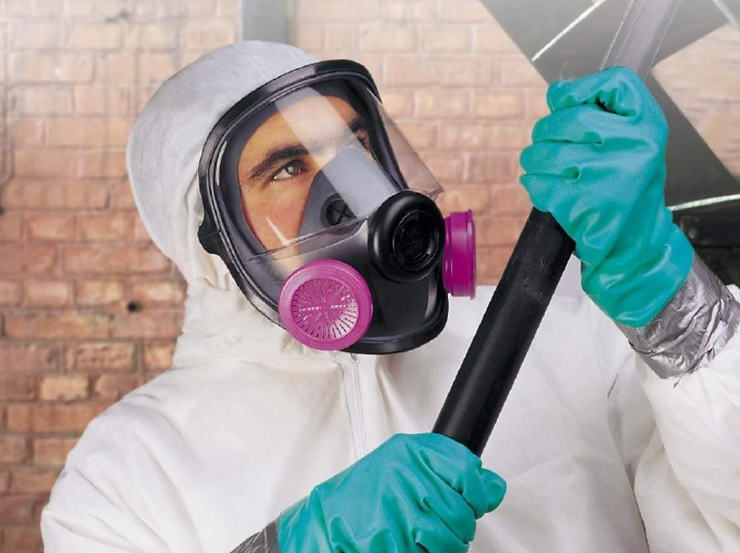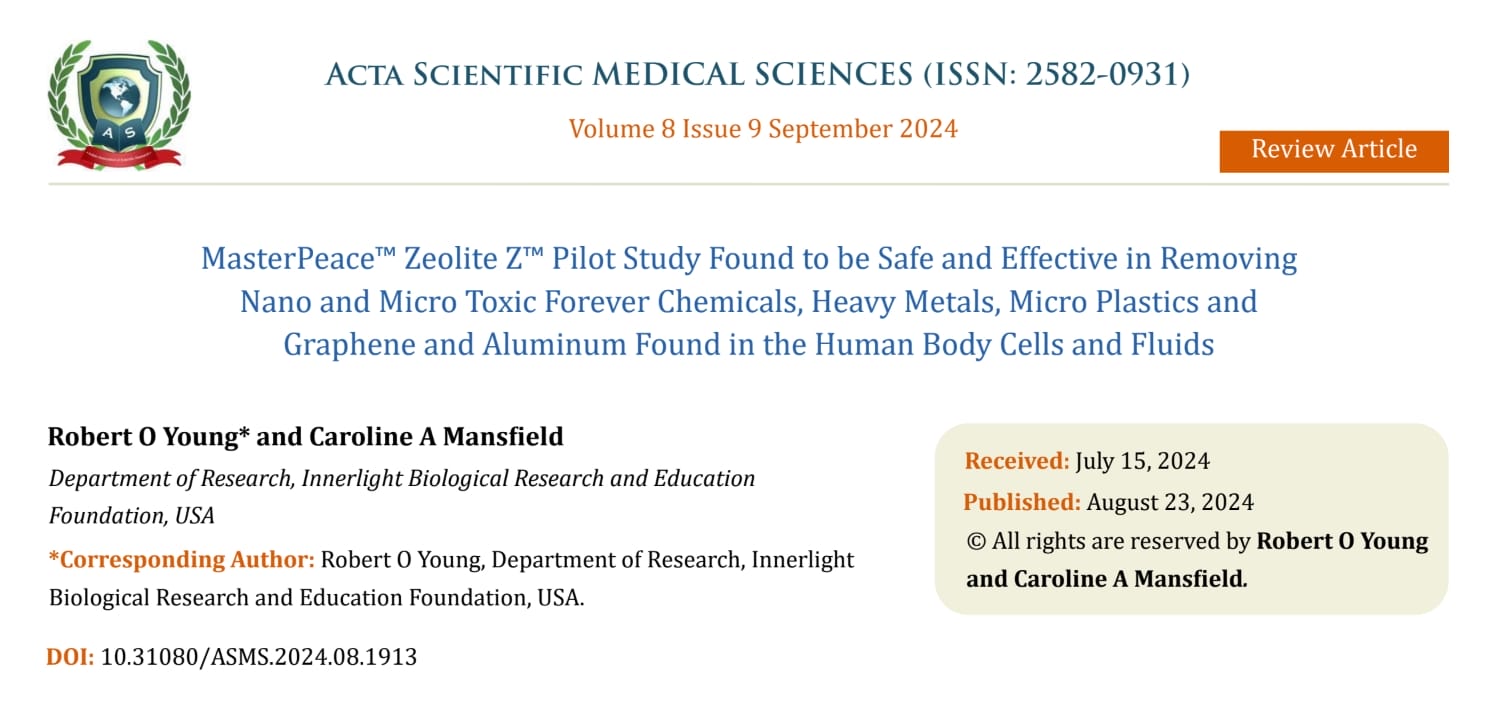Does a Cloth or Surgical Mask Provide Protection Against Chemical or Biological Pollutants?
Updated: Aug 30, 2020


The pores or opening sizes in cloth and surgical masks range from 80 to 500 microns, which is much larger than particular matter (PM) in the nano micro range such as nitrogen dioxide (NO2), carbon monoxide (CO), hydrogen cyanide(HCN), titanium dioxide (TiO2), aluminum dioxide, carbon dioxide (CO2)l, bacteria, or even bacterphages or exosomes sometimes referred to the virus. Therefore, any of the above cloth or surgical masks are useless and provide no possible protection against PM less than 80 microns and nothing in the nano micron range.(See Figure 1)

The filtering efficiency of all six of the above selected masks may potentially filter out PM larger than 80 microns such as pollen, dust or hair. Based upon the sizes of bacteria, yeast, molds, endotoxins, bateriophages, exosomes (so-called viruses), carbon monoxide emissions and factory emissions of nitrogen dioxide, hydrogen cyanide, aluminum dioxide, including electrical and magnetic fields (EMF), cloth and surgical masks provide absolutely NO filtering efficiency of PM smaller than 80 microns due to their larger open pores present in all cloth and surgical masks. (See Figure 2 – A through F are cloth masks and G through I are surgical masks)

Surface Characterization
The representative bright fieldmicroscopy images of different CMs and SMs are shown in Figure 2. Out of 20 CMs (CM1-CM20) imaged, for brevity, images of CM1, CM3, CM7, CM9, CM12, CM18 are shown in A, B, C, D, E, and F, respectively. The bright patches in the bright field microscopy images are the pores present in the masks. All CMs viewed contained two ply (layers) and the surface characteristics of both layers was very similar.
For comparison, you can view the surface of seven different brands of paper/SMs masks available on the market. The SM masks examined contained two or three layers (two or three ply). The surface morphology of the inner, middle, and outer layers of a three ply SM is shown in Figure 2 G, H and I. These micrographs showed a mean range of pores for the CM and the SM from 81 to 461 microns.
Conclusion
Based upon viewing and measuring the pore sizes of the CM and the SM using bright field microscopy at 100x magnification both types of masks were found to be incapable of filtering PM smaller than 81 microns. Because of the size ranges of PM9[see Figure 4], such as tobacco smoke, bacteria, yeast, mold, endotoxins, mycotoxins, exotoxins, exosomes, bacteriophages, air pollutants of nitrogen dioxide, hydrogen cyanide, carbon monoxide, carbon dioxide, aluminum dioxide, EMF, etc. the wearing of a cloth or surgical mask provides no protection from disease causing chemical, biological, electrical or magnetic pollution.[See Figure 3]

Additional Questions
1) What type of mask will I need to wear in order to protect myself from small micro particles and even smaller nana particles?

2. Will social distancing provide protection against small micro and even smaller nano particulate matter? The answer is no because micro and nano particles are all around us, especially in the larger cities where you find elevated PM from increased amounts of chemical, biological, electrical and magnetic pollution (EMF).


References
Belkin (1997) Belkin NL. The evolution of the surgical mask: filtering efficiency versus effectiveness. Infection Control & Hospital Epidemiology. 1997;18(1):49–57. doi: 10.1086/647501. [PubMed] [CrossRef] [Google Scholar]
Cherrie et al. (2018) Cherrie JW, Apsley A, Cowie H, Steinle S, Mueller W, Lin C, Horwell CJ, Sleeuwenhoek A, Loh M. Effectiveness of face masks used to protect Beijing residents against particulate air pollution. Occupational and Environmental Medicine. 2018;75(6):446–452. doi: 10.1136/oemed-2017-104765. [PMC free article] [PubMed] [CrossRef] [Google Scholar]
Chughtai, Seale & MacIntyre (2013) Chughtai AA, Seale H, MacIntyre CR. Use of cloth masks in the practice of infection control—evidence and policy gaps. International Journal of Infection Control. 2013;9(3):1–12. doi: 10.3396/ijic.v9i3.020.13. [CrossRef] [Google Scholar]
Colbeck, Nasir & Ali (2010) Colbeck I, Nasir ZA, Ali Z. The state of indoor air quality in Pakistan—a review. Environmental Science and Pollution Research. 2010;17(6):1187–1196. doi: 10.1007/s11356-010-0293-3. [PubMed] [CrossRef] [Google Scholar]
Drey, Graber & Bieschke (2013) Drey LL, Graber MC, Bieschke J. Counting unstained, confluent cells by modified bright-field microscopy. BioTechniques. 2013;55(1):28–33. doi: 10.2144/000114056. [PMC free article] [PubMed] [CrossRef] [Google Scholar]
Gurung & Bell (2012) Gurung A, Bell ML. Exposure to airborne particulate matter in Kathmandu Valley, Nepal. Journal of Exposure Science & Environmental Epidemiology. 2012;22(3):235–242. doi: 10.1038/jes.2012.14. [PubMed] [CrossRef] [Google Scholar]
Hell (2007) Hell SW. Far-field optical nanoscopy. Science. 2007;316(5828):1153–1158. doi: 10.1126/science.1137395. [PubMed] [CrossRef] [Google Scholar]
IQ Air (2018) IQ Air 2018 World air quality report: regional and city PM2.5 ranking. 2018. https://www.airvisual.com/ https://www.airvisual.com/
Kim, Kabir & Kabir (2015) Kim K-H, Kabir E, Kabir S. A review on the human health impact of airborne particulate matter. Environment International. 2015;74:136–143. doi: 10.1016/j.envint.2014.10.005. [PubMed] [CrossRef] [Google Scholar]
MacIntyre & Chughtai (2015) MacIntyre CR, Chughtai AA. Facemasks for the prevention of infection in healthcare and community settings. BMJ. 2015;350:h694. doi: 10.1136/bmj.h694. [PubMed] [CrossRef] [Google Scholar]
MacIntyre et al. (2015) MacIntyre CR, Seale H, Dung TC, Hien NT, Nga PT, Chughtai AA, Rahman B, Dwyer DE, Wang Q. A cluster randomised trial of cloth masks compared with medical masks in healthcare workers. BMJ Open. 2015;5(4):e006577. doi: 10.1136/bmjopen-2014-006577. [PMC free article] [PubMed] [CrossRef] [Google Scholar]
Maleki et al. (2016) Maleki H, Sorooshian A, Goudarzi G, Nikfal A, Baneshi MM. Temporal profile of PM 10 and associated health effects in one of the most polluted cities of the world (Ahvaz, Iran) between 2009 and 2014. Aeolian Research. 2016;22:135–140. doi: 10.1016/j.aeolia.2016.08.006. [PMC free article] [PubMed] [CrossRef] [Google Scholar]
Maxted (2011) Maxted B. Dust masks for Indian quarry workers: a comparative analysis of the filtering efficiency of fabrics. Journal of Humanitarian Engineering. 2011;1:15–20. [Google Scholar]
Mirowsky et al. (2013) Mirowsky J, Hickey C, Horton L, Blaustein M, Galdanes K, Peltier RE, Chillrud S, Chen LC, Ross J, Nadas A, Lippmann M, Gordon T. The effect of particle size, location and season on the toxicity of urban and rural particulate matter. Inhalation Toxicology. 2013;25(13):747–757. doi: 10.3109/08958378.2013.846443. [PMC free article] [PubMed] [CrossRef] [Google Scholar]
Mueller et al. (2018) Mueller W, Horwell CJ, Apsley A, Steinle S, McPherson S, Cherrie JW, Galea KS. The effectiveness of respiratory protection worn by communities to protect from volcanic ash inhalation. Part I: filtration efficiency tests. International Journal of Hygiene and Environmental Health. 2018;221(6):967–976. doi: 10.1016/j.ijheh.2018.03.012. [PubMed] [CrossRef] [Google Scholar]
Neupane (2016) Neupane BB. Stimulated emission depletion microscopy resolves nanoparticle assembly on a porous membrane surface. Nepal Journal of Science and Technology. 2016;17:17–22. [Google Scholar]
Rauniyaar, Aryal & Neupane (2019) Rauniyaar J, Aryal GM, Neupane BB. Morphological study on particulate matter of Kathmandu valley. Bibechana. 2019;16:41–46. doi: 10.3126/bibechana.v16i0.19190. [CrossRef] [Google Scholar]
Reche et al. (2012) Reche C, Moreno T, Amato F, Viana M, Van Drooge BL, Chuang H-C, Bérubé K, Jones T, Alastuey A, Querol X. A multidisciplinary approach to characterise exposure risk and toxicological effects of PM10 and PM2.5 samples in urban environments. Ecotoxicology and Environmental Safety. 2012;78:327–335. doi: 10.1016/j.ecoenv.2011.11.043. [PubMed] [CrossRef] [Google Scholar]
Rengasamy, Eimer & Shaffer (2010) Rengasamy S, Eimer B, Shaffer RE. Simple respiratory protection—evaluation of the filtration performance of cloth masks and common fabric materials against 20–1000 nm size particles. Annals of Occupational Hygiene. 2010;54:789–798. doi: 10.1093/annhyg/meq044. [PMC free article] [PubMed] [CrossRef] [Google Scholar]
Ricardo & Phelan (2008) Ricardo R, Phelan K. Counting and determining the viability of cultured cells. Journal of Visualized Experiments. 2008;16:752. doi: 10.3791/752. [PMC free article] [PubMed] [CrossRef] [Google Scholar]
Shakya et al. (2017) Shakya KM, Noyes A, Kallin R, Peltier RE. Evaluating the efficacy of cloth facemasks in reducing particulate matter exposure. Journal of Exposure Science & Environmental Epidemiology. 2017;27(3):352–357. doi: 10.1038/jes.2016.42. [PubMed] [CrossRef] [Google Scholar]
Sharma et al. (2014) Sharma SK, Mandal TK, Saxena M, Sharma A, Datta A, Saud T. Variation of OC, EC, WSIC and trace metals of PM10 in Delhi, India. Journal of Atmospheric and Solar-Terrestrial Physics. 2014;113:10–22. doi: 10.1016/j.jastp.2014.02.008. [CrossRef] [Google Scholar]
Singh et al. (2010) Singh MP, Singh VK, Patel DK, Tandon PK, Gaur JS, Behari JR, Yadav S. Face mask application as a tool to diminish the particulate matter mediated heavy metal exposure among citizens of Lucknow, India. Science of the Total Environment. 2010;408(23):5723–5728. doi: 10.1016/j.scitotenv.2010.08.041. [PubMed] [CrossRef] [Google Scholar]
Stender et al. (2013) Stender AS, Marchuk K, Liu C, Sander S, Meyer MW, Smith EA, Neupane B, Wang G, Li J, Cheng J-X. Single cell optical imaging and spectroscopy. Chemical Reviews. 2013;113:2469–2527. [PMC free article] [PubMed] [Google Scholar]
Van Der Sande, Teunis & Sabel (2008) Van Der Sande M, Teunis P, Sabel R. Professional and home-made face masks reduce exposure to respiratory infections among the general population. PLOS ONE. 2008;3(7):e2618. doi: 10.1371/journal.pone.0002618. [PMC free article] [PubMed] [CrossRef] [Google Scholar]
Wang et al. (2008) Wang H, Zhuang Y, Wang Y, Sun Y, Yuan H, Zhuang G, Hao Z. Long-term monitoring and source apportionment of PM2.5/PM10 in Beijing, China. Journal of Environmental Sciences. 2008;20(11):1323–1327. doi: 10.1016/s1001-0742(08)62228-7. [PubMed] [CrossRef] [Google Scholar]
World Health Organization (2016) World Health Organization Ambient air pollution: a global assessment of exposure and burden of disease. 2016. https://www.who.int/airpollution/en/ https://www.who.int/airpollution/en/



